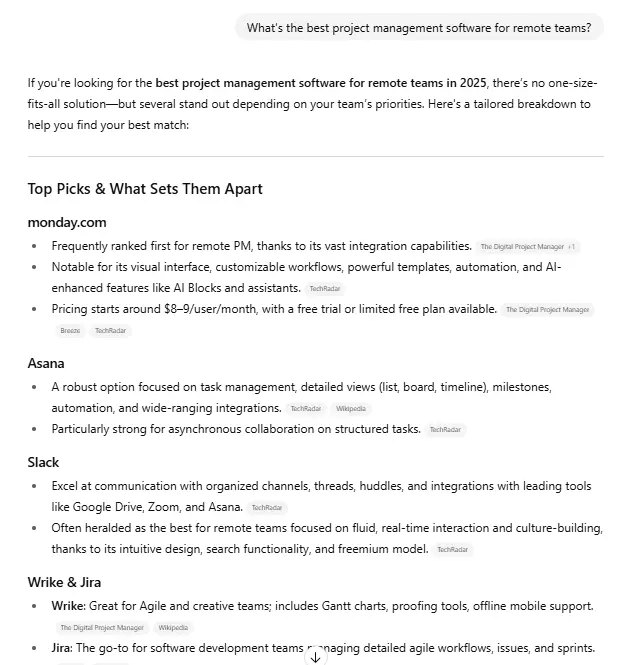Visual Search Engines – How AI Is Helping You
Visual search is a technology that enables users to search for information using images or visual input rather than traditional text-based queries. Instead of typing keywords into a search bar, users can upload a photo or take a picture...

Visual search is a technology that enables users to search for information using images or visual input rather than traditional text-based queries. Instead of typing keywords into a search bar, users can upload a photo or take a picture to initiate a search, and the system then analyzes the image’s visual characteristics to provide relevant results.
How Does It Work?
This technology leverages artificial intelligence, specifically computer vision algorithms, to understand and interpret the content of images, enabling it to recognize objects, scenes, patterns, and other visual attributes.
Visual search engines use AI techniques like image recognition, object detection, and similarity analysis to understand the content of images and provide relevant search results.
Who Is Using Visual Search?
Various industries and platforms use visual search technology to enhance user experiences, improve search functionality, and drive engagement. Some notable examples include:
1. eCommerce Platforms
Many online retailers have integrated visual search into their websites and apps. Users can take pictures of products they like or upload images from the web, and the platform will provide similar or matching items for purchase. For instance, Amazon and eBay have incorporated visual search to help users find products easily.
2. Social Media Platforms
Social media networks like Instagram have implemented visual search features. Users can click a photo within the platform and search for related images or products. Instagram’s visual search feature allows users to discover more about what they see in photos.
3. Art and Design Applications
Art and design platforms use visual search to help users identify artworks, find similar designs, and explore creative ideas. Apps like Art Recognizer and Behance use visual search to connect users with relevant artistic content.
4. Fashion and Retail Brands
Many fashion brands and retailers have integrated visual search to help users find clothing and accessories similar to items they like. Users can snap pictures of fashion items and find purchasing options. ASOS and Macy’s are examples of brands implementing visual search in their apps.
5. Travel and Tourism
Visual search can help travelers identify landmarks, attractions, and destinations. Users can take pictures of places they’re curious about; the app will provide information about those locations. Google Maps and other travel apps utilize visual search features.
6. Home Decor and Interior Design
Visual search is used to identify furniture, decor, and design inspiration. Users can take pictures of furniture pieces they like and find similar items for their homes. Wayfair and Houzz are known for implementing visual search in their apps.
7. Product and Barcode Scanners
Some apps allow users to scan barcodes or product labels to get more product information, such as reviews, prices, and availability. This is particularly useful for comparison shopping and researching products.
8. Educational Tools
Visual search can be used in educational settings to help students learn about various objects, plants, animals, and more by taking pictures and receiving information.
Key Components and Features
Visual search engines harness the power of AI and computer vision to enable users to explore the digital realm using images as queries. At the heart of this innovative technology lie several vital components and features that empower visual search engines to decipher the content of images and provide users with relevant and contextual results.
Image Recognition
Image recognition is a fundamental component of visual search engines. It involves using AI algorithms to analyze and understand the content of images. This process enables the system to identify objects, scenes, patterns, and other visual elements in the pictures. Advanced deep learning techniques, such as convolutional neural networks (CNNs), are often employed to achieve accurate image recognition.
Object Detection
Object detection goes beyond simple image recognition by identifying objects in an image and locating their positions with bounding boxes. Visual search engines can pinpoint specific things within an image, enabling more precise and context-aware search results. Object detection is crucial for applications like eCommerce, where users may want to identify and purchase specific products within images.
Similar Image Retrieval
Similar image retrieval is a feature that allows users to find visually similar or related images based on a provided query image. This is particularly useful when users want to find pictures that share visual characteristics or attributes with a reference image. Visual search engines use techniques like feature extraction and image embeddings to compare photographs and retrieve visually relevant results.
Advantages over Text-based Search
Visual search offers distinct advantages over traditional text-based search methods. Users can overcome language barriers by utilizing images as queries and express their intent more intuitively. Visual search enhances the accuracy of results, especially when describing complex or visually distinctive objects. Additionally, it enables efficient exploration of content within images, promoting seamless discovery and enhancing user engagement.
How AI Powers Visual Search Engines
1. Machine Learning and Deep Learning
Deep learning, a subset of machine learning, employs intricate neural network architectures to enable machines to learn and understand graphic patterns. This advanced technology facilitates the accurate interpretation of images, allowing search engines to recognize and process complex visual information.
2. Neural Networks in Image Recognition
By mimicking the human brain’s visual processing, these networks analyze images layer by layer, extracting increasingly abstract features. This hierarchical approach allows neural networks to identify objects, shapes, and textures, forming the foundation of precise image recognition.
3. Training Data and Model Development
The efficacy of visual search engines hinges on extensive training datasets. These meticulously curated and labeled datasets expose AI models to diverse visual content. Through iterative training, models learn to associate graphic patterns with relevant information, refining their ability to recognize and classify objects, scenes, and attributes within images.
4. Transfer Learning for Visual Search
Transfer learning, a technique that leverages pre-trained models, is instrumental in expediting the development of visual search engines. By starting with models trained on vast datasets for general optical recognition tasks, developers can fine-tune these models for specific search contexts. This approach accelerates the deployment of accurate and efficient visual search systems.
Case Studies
Delving into specific instances where visual search engines have made a profound impact, the following case studies illuminate the transformative potential of these systems and offer a glimpse into how they are reshaping our interactions with information and imagery.
Google Lens: Transforming Visual Search
Google Lens is a pioneering example of how visual search has been revolutionized. With its integration into various Google products, this AI-powered tool enables users to explore their surroundings by simply pointing their device’s camera at objects, text, or landmarks. Beyond recognition, Google Lens translates, provides context, and offers interactive actions, seamlessly merging the digital and physical realms.
Pinterest Lens: Bridging Inspiration and Reality
Pinterest Lens reimagines image-driven discovery. Allowing users to capture or upload images transforms aspirations into actionable insights. Users can find related pins, products, and ideas, bridging the gap between inspiration and realization. This integration of visual search technology enhances the Pinterest experience, making the platform an even more powerful tool for creative exploration.
CamFind: Recognizing Objects on the Go
CamFind empowers users with real-time visual search capabilities. Users can identify objects, landmarks, and even barcodes with a simple snap. This technology-driven application enhances everyday experiences, from shopping to travel, by offering instant information and creating a seamless connection between the physical world and digital resources.
Conclusion: The Synergy of AI and Visual Content
In the grand tapestry of technological innovation, visual search engines are a testament to human curiosity and the relentless pursuit of knowledge. As we step forward into a future where images hold the keys to unlocking information, let us embrace the synergy of AI and visual content, reshaping how we discover, learn, and explore.

 JaneWalter
JaneWalter 

























.jpg&h=630&w=1200&q=100&v=6e07dc5773&c=1)






